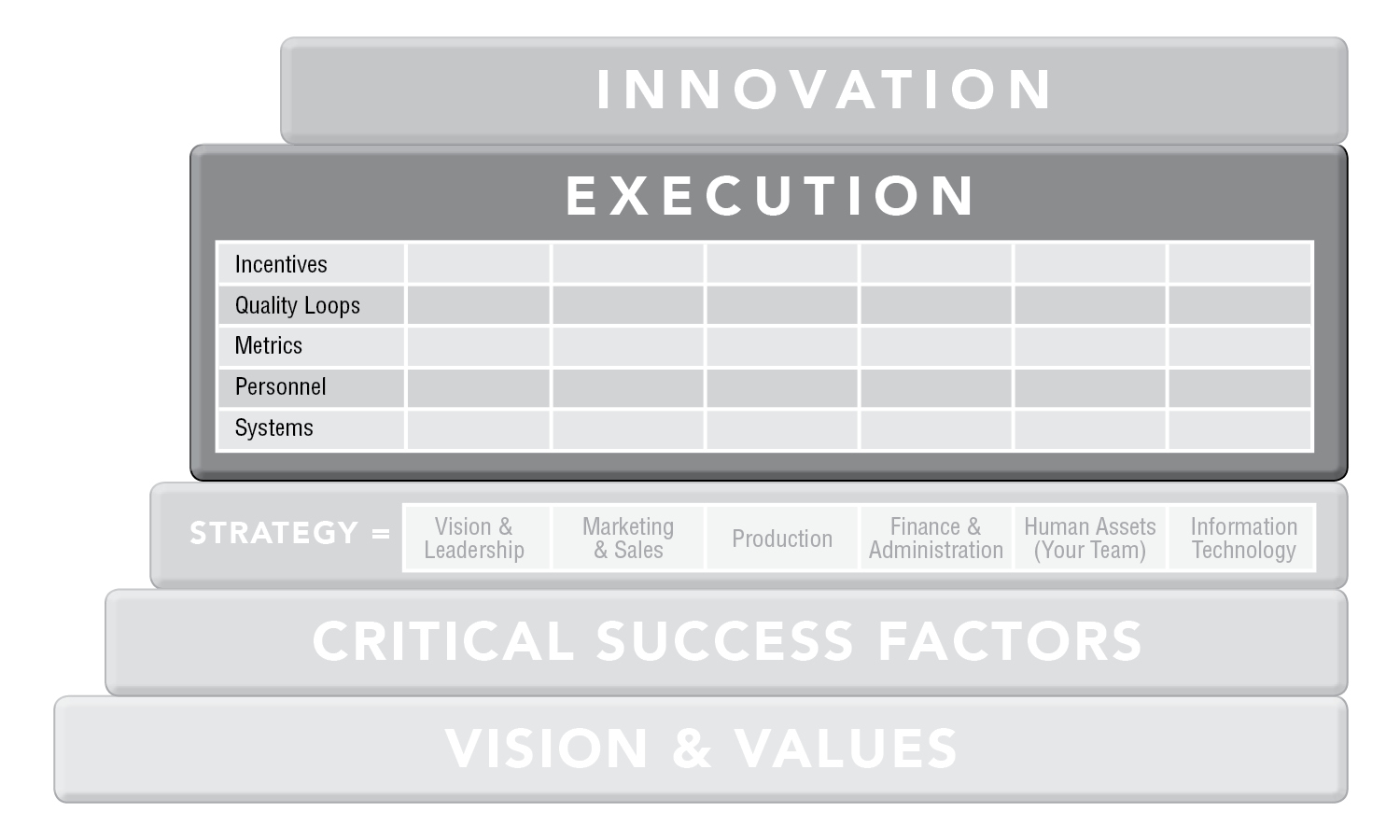Most likely, you have heard that question from a medical professional.
As human beings, our literal very existence is dependent on our “system”.
A question regarding how we are doing is critically important.
Likewise, an assessment of how a company’s systems are operating is crucial -because a business is also dependent on its “systems” for existence.
A multitude of systems are utilized throughout a company’s operations and from a technology standpoint they can be low, medium or high tech.
Examples of various levels of technology used in systems include:
Low Technology Systems
There is an increasing concern, even among IT professionals, that people are becoming too reliant on, and maybe addicted to, technology. There is re-renewed interest in paper-based planners that enable a person to organize their day, week, and month in a very visual way. So says Omar Finley, owner and CEO of The Listening Tree, a bookstore in Atlanta, Georgia that specializes in literacy and learning.
Use of a paper-based organizer system enables the user to take a break from phones, emails, social media posts, and virtual meetings, and be more intentional about their schedule, as compared to just reacting to incoming phone calls, emails, and social media posts.
Medium Technology Systems
Many restaurants have had to transform themselves with new systems as a consequence of COVID-19. For example:
- Menu ordering from QR codes
- Online and mobile app ordering
- Social distancing and sanitizing procedures
- No touch payment systems using a mobile phone
- Employing “ghost kitchens” to facilitate lower cost and faster delivery
Some new restaurants have been designed from the bottom up with the use of labor-saving systems and ones that accommodate to our current pandemic.
For instance, addressing both of the above objectives, recently opened Brooklyn Dumpling Shop is contactless and highly automated. The kitchen and staff are separated from customers by glass, food is ordered via an app, and the food is delivered to customers via a wall of Amazon pickup location like lockers with glass doors – so personnel do not come into physical contact with customers.
These and other systems have enabled Brooklyn Dumpling Shop to keep their costs down and ensure the protection of their personnel.
 High Technology Systems
High Technology Systems
Something that was just science fiction several years ago is now reality – hundreds of knee-high robots delivering food! Starship Technologies has developed a fleet of robots that can hold around four large pizzas and they are now delivering food at over 20 college campuses, and some cities around the world.
They travel about 5 mph and utilize GPS, cameras, sensors, and laser scanners to navigate sidewalks and even cross streets autonomously. Many other companies are competing for this market, and some of their robots travel up to 25 mph on roads, versus on sidewalks.
According to Dennis Maloney, Senior VP and Chief Digital Officer at Domino’s Pizza. the reason many companies are embracing systems of robots is, “There is no store in the country right now with enough delivery drivers,”.
Systems Are The Backbone Of A Company
Low, medium, and high-tech systems are the backbone of a company. Therefore, it is incumbent for organizations to improve their systems so they can operate more efficiently and serve their customers better.
But how does an enterprise go about improving their systems?
Below please find a diagram of our Structure of Success™ methodology that, reading from the bottom up, shows a business’ “Execution” starts with its systems.

Using my upcoming book, Work Less, Make More and Have Fun in Your Business as a framework, I would like to explore how an organization can go about improving its systems.
Looking at the above diagram, it is important to note that systems are used in all six areas of a business:
- Vision & Leadership
- Marketing & Sales
- Production
- Finance & Administration
- Human Assets
- Information Technology
Systems encompass both your overall plans and detailed processes. Your processes are the detailed blueprints for how you want to operate each of the six areas of your business. No two businesses would have the exact same systems because they are unique to each business.
Plans Are General In Nature
Your plans state how you want things to operate within your business at a broad level. They are specific to each of the six areas of your organization, and they state from an overall standpoint what your methodology will be for accomplishing things within your company.
Your plans lay out the game plan for the operations of each of your six areas and are general in nature, while the exact details of your plans are specified in your processes, which reside beneath your plans.
Detailed Processes Are Required
Processes are the detailed procedures and courses of action that are necessary to carry out your overall plans. These are written documents that identify the necessary steps to follow to produce effective and consistent performance in each area. Processes need to be completely in synch with your plans and are the executable portion of your systems. Processes specify how everything is done and who does it within your business.
Eventually a process should be developed and documented for literally everything in your business. For example, processes may include opening your business in the morning and closing it at night, the details of your sales efforts, how you: develop your product, close the books at month end, do performance reviews, carry out planning retreats, upgrade the software on your network, etc.
Systems and their detailed processes are key for your business. There are three steps that must be completed with regard to your processes:
- Identify your processes
- Optimize your processes
- Fully document your processes
Processes are critical to fully satisfying your customer 100% of the time. Without the correct processes in place, you will end up with inconsistent results. This can lead to customer dissatisfaction, which leads to inability to reach your Vision for your company. Systematizing your organization using optimized and documented processes ensures that as your business’s volume grows while your product quality does not decrease—which can easily happen as you scale up your operations.
Development Of Your Processes
There are three fundamental keys to defining the processes for your business.
First, optimized systems are developed for all the activities, actions, and procedures that take place within your business.
Second, each step of every process is fully documented in writing; nothing is left to chance for the executers of the process to figure out on their own.
Third, personnel are fully trained on them, and the processes are used by personnel consistently. Written processes are available to the personnel executing the process. Keep in mind that the execution of processes leads to outcomes which are measured via metrics.
Most businesses start out in a trial-and-error mode, which hopefully leads to discovering what works and what does not work. Thereafter, a company needs to solidify its processes.
How does an organization figure out its best processes and optimize its overall systems?
Use Of Peer Group Teams
When a company is first solidifying its processes, or if they have no written processes in place, an excellent way to develop optimal processes is to gather all the persons who are involved with a particular function and as a team figure out the best processes.
For instance, let us say that you have five salespersons. Up to now you have let them fulfill their sales responsibilities as they saw fit. You have one superstar salesperson, one very good salesperson, two average salespeople, and one below-average salesperson.
If you and all five of your salespeople get together in one room and share in detail how each executes his/her sales activities, you can jointly determine the optimal sales process. You also obtain buy in from each of the salespeople, since they are participating in the formulation of the optimal sales process.
A key benefit of doing this is that it increases the percentage of your staff who will adhere to the process because they have been included in defining the process and it ends up being “their” process.
Periodically the team that defined the process or a group of people who represent all the users of the subject process should meet to discuss any suggestions about the process. While only an authorized individual or group can approve actual changes to the process.
A key part of documenting the final optimized process is to record why the process was solidified as it was so that all future users of the process understand the analysis and logic used to develop the current process.
Where To Start
Begin by making a commitment to employ the best possible systems in your company and then utilize the following four steps.
First, identify your systems and their detailed processes. Just leaving things up to each person in your company to do their job as a they see fit will not provide you with the consistent results you desire.
Second, by doing research or using peer groups, optimize your processes so they are best they can be for providing your desired outcome.
Third, fully document your processes, including why the process does things a certain way.
Fourth, using all of this information, ensure your personnel are fully trained on your processes.
If you could use assistance with optimizing your company’s systems, please contact us using the information below so we can be a resource to you in this critical area.
Fountainhead Consulting Group, Inc. is an Innovation and Business Planning firm. During the past 21, years we have shown over 1,200 companies how to achieve their goals by using our unique, comprehensive, and systematic FastTrak Innovation Program™, Innovation Academy™, and Structure of Success™ methodologies. Using the components in these methodologies, each month we examine an aspect of how to transform your business or organization into a true 21st Century enterprise.
Office: (770) 642-4220
George.Horrigan@FountainheadConsultingGroup.com
Tags: Business Planning, entrepreneur, front end of innovation, innovation, invention, small business consulting, small business planning, start a business

